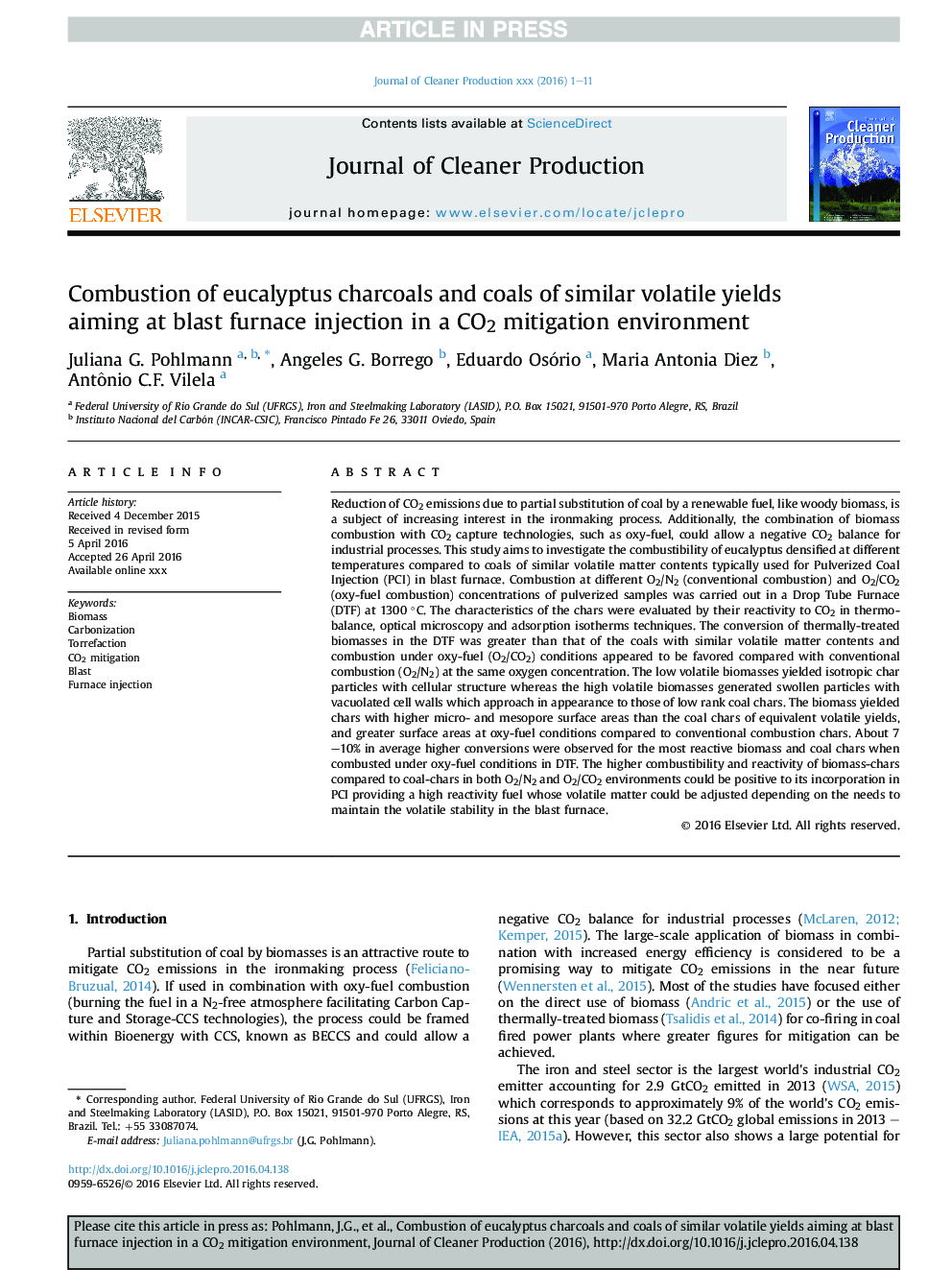| کد مقاله | کد نشریه | سال انتشار | مقاله انگلیسی | نسخه تمام متن |
|---|---|---|---|---|
| 8101822 | 1522120 | 2016 | 11 صفحه PDF | دانلود رایگان |
عنوان انگلیسی مقاله ISI
Combustion of eucalyptus charcoals and coals of similar volatile yields aiming at blast furnace injection in a CO2 mitigation environment
دانلود مقاله + سفارش ترجمه
دانلود مقاله ISI انگلیسی
رایگان برای ایرانیان
کلمات کلیدی
موضوعات مرتبط
مهندسی و علوم پایه
مهندسی انرژی
انرژی های تجدید پذیر، توسعه پایدار و محیط زیست
پیش نمایش صفحه اول مقاله

چکیده انگلیسی
Reduction of CO2 emissions due to partial substitution of coal by a renewable fuel, like woody biomass, is a subject of increasing interest in the ironmaking process. Additionally, the combination of biomass combustion with CO2 capture technologies, such as oxy-fuel, could allow a negative CO2 balance for industrial processes. This study aims to investigate the combustibility of eucalyptus densified at different temperatures compared to coals of similar volatile matter contents typically used for Pulverized Coal Injection (PCI) in blast furnace. Combustion at different O2/N2 (conventional combustion) and O2/CO2 (oxy-fuel combustion) concentrations of pulverized samples was carried out in a Drop Tube Furnace (DTF) at 1300 °C. The characteristics of the chars were evaluated by their reactivity to CO2 in thermobalance, optical microscopy and adsorption isotherms techniques. The conversion of thermally-treated biomasses in the DTF was greater than that of the coals with similar volatile matter contents and combustion under oxy-fuel (O2/CO2) conditions appeared to be favored compared with conventional combustion (O2/N2) at the same oxygen concentration. The low volatile biomasses yielded isotropic char particles with cellular structure whereas the high volatile biomasses generated swollen particles with vacuolated cell walls which approach in appearance to those of low rank coal chars. The biomass yielded chars with higher micro- and mesopore surface areas than the coal chars of equivalent volatile yields, and greater surface areas at oxy-fuel conditions compared to conventional combustion chars. About 7-10% in average higher conversions were observed for the most reactive biomass and coal chars when combusted under oxy-fuel conditions in DTF. The higher combustibility and reactivity of biomass-chars compared to coal-chars in both O2/N2 and O2/CO2 environments could be positive to its incorporation in PCI providing a high reactivity fuel whose volatile matter could be adjusted depending on the needs to maintain the volatile stability in the blast furnace.
ناشر
Database: Elsevier - ScienceDirect (ساینس دایرکت)
Journal: Journal of Cleaner Production - Volume 129, 15 August 2016, Pages 1-11
Journal: Journal of Cleaner Production - Volume 129, 15 August 2016, Pages 1-11
نویسندگان
Juliana G. Pohlmann, Angeles G. Borrego, Eduardo Osório, Maria Antonia Diez, Antônio C.F. Vilela,